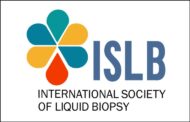Suthan Chanthawong, BPharm, BCP, BCOP, is an assistant professor of Pharmaceutical Sciences in the Division of Clinical Pharmacy at Khon Kaen University, in Thailand. In the following interview, he discusses how oncology pharmacists differ from other pharmacists in his region, as well as the role they play in supporting decision making to balance the cost and benefit of treatments.
ILCN: What is the role of an oncology pharmacist in your region? How does it differ from other pharmacists in your hospital or care center?
Dr. Chanthawong: From my perspective, the role of an oncology pharmacist may be different from that of a general hospital pharmacist in terms of required competency levels of pharmaceutical care, pharmacotherapy knowledge, clinical skills, and pharmacy leadership toward cancer care. Clinical skills for oncology pharmacists include optimizing treatment plans for individual patients while monitoring efficacy and safety of chemotherapy and targeted agents, educating patients, assessing drug–drug interactions or drug–herb interactions, and recommending appropriate dosage adjustments in individual patients with impaired renal or hepatic function.
I am currently part of the faculty staff of Khon Kaen University School of Pharmaceutical Sciences, servicing the palliative care team at the Khon Kaen University–affiliated university hospital. Along with caring for patients, we have provided a short-term (4-month) training course in pharmaceutical care in a palliative setting for the past 4 years. The role of the clinical palliative care pharmacist includes managing symptoms, reconciling medications, providing drug information as well as guidance regarding special dosage forms and specific administration methods (e.g., syringe driver, transdermal patch, sublingual), recommending cessation of unnecessary drugs (de-prescribing medication), verifying medication use during home visits, and monitoring drug adherence during services.
ILCN: Are oncology pharmacists involved in patient discussions about side effects and drug interactions, or is that the role of someone else on the care team?
Dr. Chanthawong: The roles of Thai oncology pharmacists have evolved and are now well-accepted by other health care providers, with the support of the Asia Pacific Oncology Pharmacy Society. Some of the drug-management concerns for patients with lung cancer that we manage on a daily basis are cisplatin-induced nephropathy, chemotherapy-induced nausea and vomiting (CINV), and side-effect education for targeted therapies.
ILCN: Is therapeutic selection broadly based on biomarkers, or is this decision mainly governed by limited approvals?
Dr. Chanthawong: To my knowledge, patients covered by the Civil Servant Medical Benefit Scheme (CSMBS) were approved by the Oncology Prior Authorization (OCPA) system to use gefitinib and ceritinib for metastatic NSCLC with relevant marker results. Currently, osimertinib is indicated for patients covered by CSMBS whose treatment has failed after erlotinib/gefitinib use and who have T790M mutation–positive disease (and this is supported by the OCPA system). However, self-paying patients must pay out of pocket because new targeted agents (e.g., gefitinib, ceritinib, osimertinib, and alectinib) were not listed under the National List of Essential Medicines. In this situation, some self-paying patients, on a case-by-case basis, are supported by a patient-assistance program. However, the availability of the patient-assistance programs was found to vary by hospital.
ILCN: How can oncology pharmacists help patients/healthcare systems manage cost?
Dr. Chanthawong: The cost of cancer treatment is high. Therefore, it is necessary to use effective tools to support decision making to balance cost and benefit. Oncology pharmacists can play a vital role in promoting the use of health technology assessment in decision making by selecting health technology (including high-value cancer drugs) with the greatest benefit for the price. Health technology assessment can also be used to support information for policy makers and in developing clinical practice guidelines for local needs.
For example, in 2016, my team conducted research on the cost-effectiveness of an olanzapine-based regimen in preventing CINV following highly emetogenic chemotherapy (HEC).1 This antiemetic regimen is particularly useful in Southeast Asian countries, where resources are limited. This study was conducted in four countries using a societal perspective method with a 5-day time horizon. The results showed that olanzapine as part of the standard antiemetic regimen is cost-effective in multiple Southeast Asian countries for the prevention of CINV in patients receiving HEC.
In 2018, the Thai Food and Drug Administration developed an indication for olanzapine as an alternative antiemetic for treating patients receiving HEC who develop refractory CINV. Currently, most Thai medical oncologists prevent CINV associated with HEC with an olanzapine-based regimen.
ILCN: How do we best monitor compliance? Are there creative ways to enhance compliance?
Dr. Chanthawong: Strategies to reduce noncompliance should incorporate several methods, such as providing knowledge about cancer, treatment modality, and chemotherapy or targeted therapy. Many patients do not understand how or why a treatment works and therefore may not follow directions. In addition, we use multiple reminder methods such as drug calendars, specially prepared medicine cartridges, large lettering or images on the drug label, mobile applications that remind patients to take medication, adjustments in the dosing regimen to be less complex, and allowing patients to participate in their treatment plan.
Reference:
- Chanthawong S, Lim Y H, Subongkot S, et al. Cost-effectiveness analysis of olanzapine-containing antiemetic therapy for managing highly emetogenic chemotherapy in South East Asia: a multinational study. Support Care Cancer. 2017;25(2 Supplement 1): S64-5.






